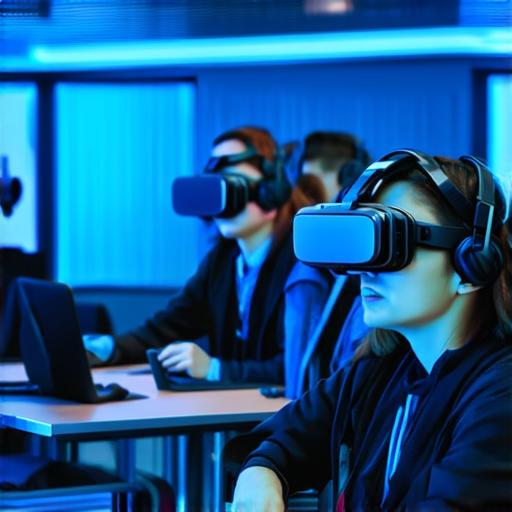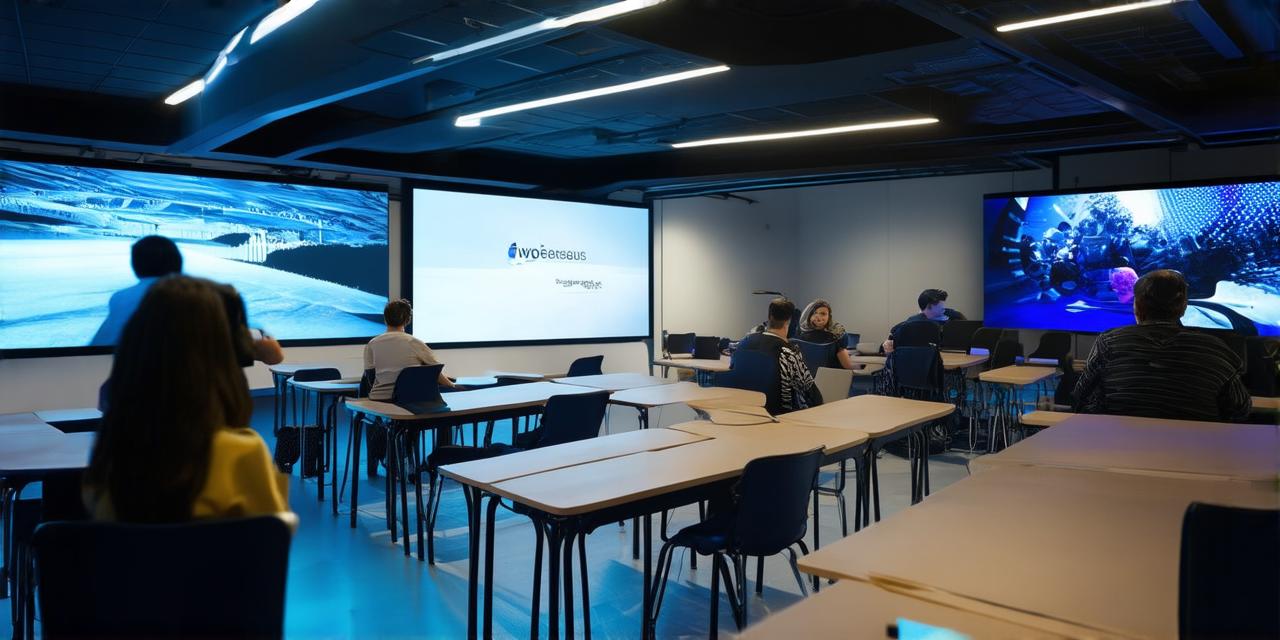Virtual reality technology has revolutionized the way we learn and interact with our environment, providing students with immersive learning environments that can simulate real-world scenarios, enhancing their understanding of complex concepts, improving retention of information, increasing engagement and motivation, and providing real-world applications. In this article, we will explore the advantages of virtual reality in education and its potential to transform the way we teach and learn.
Immersive Learning Environments
Virtual reality provides students with immersive learning environments that can simulate real-world scenarios. These immersive environments allow students to experience learning in a more engaging and interactive way, making them more motivated to learn and retain information. For example, virtual reality can be used in the medical field to simulate surgical procedures, allowing students to practice their skills in a safe environment without risking patient harm. Similarly, virtual reality can be used in the engineering field to simulate complex machinery and systems, allowing students to understand how these systems work and how they can be improved.
Enhanced Understanding of Complex Concepts
Virtual reality allows students to gain a better understanding of complex concepts by providing them with immersive learning environments that can help them visualize and interact with abstract concepts in a way that is difficult or impossible through traditional teaching methods. For example, virtual reality can be used to teach astronomy by simulating the solar system and allowing students to explore it in 3D. This can help them gain a deeper understanding of the relationships between the planets and their moons.
Improved Retention of Information
Virtual reality has been shown to improve information retention, particularly when compared to traditional teaching methods such as lectures and textbooks. This is because virtual reality provides students with a more engaging and interactive learning experience that keeps them motivated and focused on the task at hand. Studies have also shown that virtual reality can help students retain information for longer periods of time, allowing them to apply what they have learned in real-world scenarios.
Increased Engagement and Motivation
Virtual reality can also increase engagement and motivation among students by providing them with immersive learning environments that are both fun and interactive. This can lead to improved academic performance and a more positive attitude towards learning. For example, virtual reality can be used in the history field to simulate historical events and allow students to experience them as if they were actually there. This can help make history come alive for students and increase their interest in the subject.
Real-World Applications
Virtual reality is already being used in a variety of industries, including education, healthcare, and entertainment. In education, virtual reality technology is being used to provide students with immersive learning environments that can simulate real-world scenarios. In healthcare, virtual reality is being used to train medical professionals in surgical procedures and to treat patients with conditions such as PTSD. In the entertainment industry, virtual reality is being used to create immersive gaming experiences that transport players into new worlds and provide them with unique and engaging gameplay.
Expert Opinions

Virtual reality technology is already being embraced by many experts in education and technology. According to Dr. Richard VanPatten, a professor of applied linguistics at the University of California, Irvine, "Virtual reality technology has the potential to revolutionize the way we teach and learn." He believes that virtual reality can help students develop critical thinking skills and enhance their understanding of complex concepts in a way that is difficult or impossible through traditional teaching methods.
Case Studies
There are many examples of how virtual reality is being used in education to improve student learning outcomes. One such example is the use of virtual reality in the medical field to simulate surgical procedures, allowing students to practice their skills in a safe environment without risking patient harm. Another example is the use of virtual reality in the engineering field to simulate complex machinery and systems, allowing students to understand how these systems work and how they can be improved. Additionally, virtual reality has been used in the history field to simulate historical events and allow students to experience them as if they were actually there.
Summary
Virtual reality technology has the potential to revolutionize the way we teach and learn by providing immersive learning environments that can simulate real-world scenarios, enhancing understanding of complex concepts, improving retention of information, increasing engagement and motivation, and providing real-world applications. As virtual reality technology continues to advance, it will likely become an increasingly important tool in education, helping to transform the way we teach and learn for generations to come.
